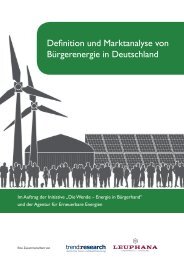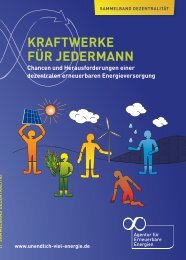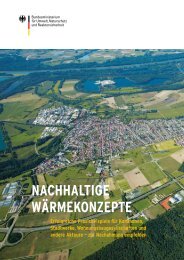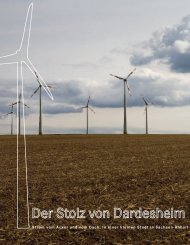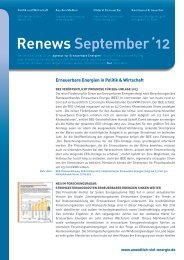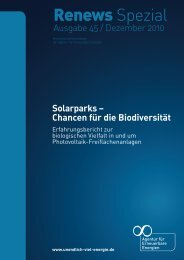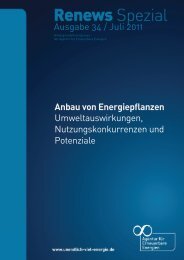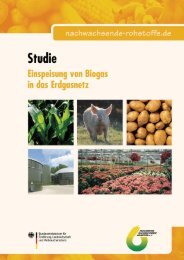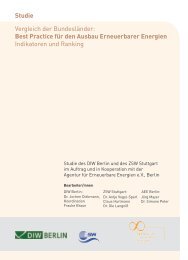Solar parks - Agentur für Erneuerbare Energien
Solar parks - Agentur für Erneuerbare Energien
Solar parks - Agentur für Erneuerbare Energien
You also want an ePaper? Increase the reach of your titles
YUMPU automatically turns print PDFs into web optimized ePapers that Google loves.
Renews Special Best practice recommendations Issue 45 | p 26 p 27 | Issue 45 Renews Special <strong>Solar</strong> <strong>parks</strong> – Opportunities for Biodiversity<br />
Grey hair-grass (Corynephorus canescens) prefers sparse, open, sandy areas, like those found at the Lieberose solar park. (Photo: Tim Peschel)<br />
At the Lieberose solar park no attempts were made to provide ground cover once the solar park was<br />
complete, in order to ensure that the vegetation that developed was typical for the area. No seeds were<br />
sown on the open spaces. The aim was for certain open land habitats to develop, e.g. moorland combined<br />
with bare earth and sparse sandy grassland.<br />
The Rothenburg solar park was built in sections on a plot of arable land measuring around 35 hectares.<br />
Following closure of the farm, a valuable vegetation structure had developed which is of particular<br />
importance as a feeding and nesting habitat for bird life. For this reason, no new seed was sown at this<br />
site either. Instead, the existing fallow land was conserved.<br />
Extensive grassland containing a considerable diversity of flora and fauna often forms between the rows of modules. (Photo: Tim Peschel)<br />
At the Salmdorf solar park, seed appropriate to the site was sown to create extensive grassland on a<br />
former arable plot. The entire area inside the plant, including the areas underneath the modules, was<br />
sown with an appropriate mixture of meadow seed and since then has been managed by mowing once<br />
or twice a year. This has transformed a previously species-poor area into a species-rich meadow of a<br />
higher environmental standard. A preliminary study in summer 2010 revealed numerous plants typically<br />
found in tall oat-grass meadows, which are now rare, including the spreading bellflower (Campanula<br />
patula), meadow cranesbill (Geranium pratensis), oxeye daisy (Leucanthemum vulgare), meadow salsify<br />
(Tragopogon pratensis) and meadow sage (Salvia pratensis).<br />
Ten hectares of extensive grassland were also created on adjoining plots of former arable land at the<br />
Lauingen solar park as a compensatory measure. The seed used was appropriate for the site and<br />
certified as having coming from within a defined region of origin with no plant-growers involved in its<br />
cultivation or propagation. This means that it meets the most stringent nature protection requirements<br />
and contributes to the conservation of regional biodiversity.<br />
e. Avoiding barrier effects caused by fencing<br />
Fences are necessary for security reasons, but should allow enough space for small animals to pass through. (Photo: First <strong>Solar</strong> GmbH)<br />
The premises of solar <strong>parks</strong> are often fenced off for security reasons. Where possible, the aim should<br />
be to avoid fencing off outdoor areas. Alternatively, regular passages and a ground clearance under the<br />
fence of at least 10 - 15 cm can conserve the natural functional relationships between the fenced-in<br />
solar plant and the surrounding area. Fencing of this kind no longer presents a barrier for large or small<br />
animals. Large solar <strong>parks</strong> in particular should try to achieve this through the use of wildlife-friendly<br />
fencing. This enables larger mammals in particular to cross the area occupied by a ground-mounted<br />
solar plant. It avoids carving up habitats and the isolation and fragmentation of animal populations that<br />
this entails.



